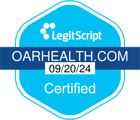How To Prevent Drinking & Driving

In This Article
Alcohol effects our brain and impairs our ability to drive. Driving after drinking can have harsh consequences. The statistics prove it. Drunk driving can lead to lives lost, jobs lost, severe injury, legal trouble, debt, and incarceration.
Yet, despite widespread education about the perils, people still drive under the influence all the time. Why?
The reasons range from lack of planning and lack of resources to a person’s location or even their upbringing.
Here, we look at some of the most common reasons drunk driving occurs, according to research, and the steps you can take to prevent yourself from getting behind the wheel while impaired.
Drunk Driving Statistics
In the United States, more than one person per hour is killed in a drunk driving accident (1).
Driving with a blood alcohol concentration (BAC) of 0.08 grams of alcohol per deciliter (g/dL) or higher is illegal in all parts of the country. However, in Utah, the legal limit is even lower at 0.05%. And any amount of booze detected for a driver under age 21 in the United States is considered illegal.
Plus, it’s important to know that any BAC can impair driving enough to cause irreparable damage. In 2019, 1,775 lives were lost in accidents where a driver’s BAC was under 0.08% (1).
Prevention campaigns in the United States began in earnest in the early 1980s (2). Back then, drunk driving accounted for about half of all crash fatalities in the nation. Today, alcohol impaired drivers are still responsible for nearly 30 percent of motor vehicle deaths (3).
Why People Drink & Drive
Why, despite education campaigns about the legal ramifications and dangers, do people continue to drink and drive?
Ultimately, impaired driving comes down to decision-making, both about drinking and about driving, according to the research. But many factors come into play.
“Very few people set out to become drunk drivers,” write the authors of an older U.S. Department of Transportation (DOT) study on the topic. “However, they do set out to drink when they know they are going to drive, and they do set out to drive when they know they are going to drink” (4).
Peer Factors That Influence Drunk Driving
In the DOT study, researchers interviewed 581 people who admitted to drinking and driving and asked them about the decisions that led to the choice to get behind the wheel. More than one-third of responses involved social or environmental influences.
For example, when encouraged by others, people may drink more than planned or drink when they didn’t plan to at all. Or they may drive drunk because their friends perceive them to be the least intoxicated person in the group (4).
Personal Factors That Influence Drunk Driving
The study also found that one-fifth of respondents chose to drink and drive because of internal factors. For example, they drank more than intended because they liked the buzz. Or they didn’t recognize how impaired they were (4).
Underestimating intoxication is a common issue. In a 2019 survey from American Addiction Centers, more than half (53%) of survey respondents say they feel capable of driving after drinking. And nearly 30% say that’s the main reason they do it (5).
And in general, alcohol has profound impact on our brains.
Misconceptions That Lead To Drunk Driving
Common myths can also lead people to think they’re OK to drive.
For example, some people believe that coffee, water, sports drinks, or food can make them less drunk. These things might make you feel less inebriated, but only time can sober you up by lowering your BAC.
On average, booze leaves the body at a rate of 0.015 g/100mL/hour. Based on this, people tend to think the “one drink per hour rule” is safe. It’s not.
Even following that guide, you could still end up with a BAC over the legal limit. That’s because the alcohol metabolism rate can vary from person to person and setting to setting, depending on many factors (6).
Remember, many accidents occur when a driver has a BAC below the legal limit. And they can have dire consequences.
A recent study that looked at 15 years of U.S. crash data found that about 15% of alcohol-related motor vehicle fatalities involve drivers with a BAC below 0.08%. In more than half of incidents where this occurred, the drinking driver was not the one who died (7).
Transportation Factors That Influence Drunk Driving
At the heart of many decisions to drive drunk is the concern of how to get from point A to point B. Most urban areas have rideshare, taxi, or train or bus options. But people who live in rural areas often don’t have access to these alternative modes of transportation.
For example, out of any U.S. state, Montana has the highest percentage of rural residents. And it has a rate three times the national average of young adults killed in alcohol-related crashes.
In a small study that interviewed 72 young adults across Montana about reasons for drinking and driving, participants cite a lack of transportation options (8). Some say even asking someone else for a ride or using the designated driver method could be considered unreasonable because people often live far from each other.
The DOT study mentions other transportation reasons as well, such as not wanting to leave a vehicle somewhere or having to retrieve it the next day (4). Participants in the Montana study say leaving a car could “result in judgment or damage to one’s reputation” (9).
Cultural Factors That Influence Drunk Driving
The study on Montana young adults also points to how the culture of drinking in one’s family can play a role in someone’s decision to drink and drive.
When someone sees their parents or older relatives repeatedly drive under the influence, they may be more likely to do it as well (9).
Examining Past decisions Around Drinking & Driving
Preventing drinking and driving starts before the next time you plan to drink. You can use a technique of examining each individual decision you made in the past that led to a specific outcome, such as driving under the influence.
This method is called critical incident technique. It’s often used in behavioral research. Researchers have identified seven possible decision points that can lead to drinking and driving (4).
7 Key Decision Points
- Planning for a drinking incident or event: whether to go and where to go
- Transportation: how to get there
- Planning the drinking: consuming before an event or bringing alcohol to it
- Decisions about drinking:
- Additional activities: eating, playing drinking games, etc
- Decisions to leave a drinking location: whether to leave and where to go
- Decisions to drive after: getting behind the wheel or opting to leave your car
If you’ve ever driven after drinking in the past, you have a road map to examine all the decisions you made along the way that led to you getting behind the wheel.
Here’s an example: You planned to stop at a bar after work where friends were gathering for someone’s birthday. You weren’t planning to have more than one drink, and you were sticking around to eat a burger for dinner. So, you drove. But when you arrived, the fun atmosphere got the best of you. You had more rounds than intended. At the end of the night, you didn’t want to leave your vehicle at the bar, so you drove it home, despite knowing the risks.
Now let’s examine the decisions: First, you chose to drive to a place where you knew you’d be drinking. Second, you drank much more than intended. Third, you got behind the wheel while intoxicated. Altering any one of these decisions would likely have prevented you from driving drunk. What can you do differently in the future to keep yourself and others safe?
3 Safety Steps To Prevent Drinking & Driving
1. Make Some Solid Personal
- Understand your own relationship with alcohol. Oar Health's
- Never get behind the wheel after consuming alcohol
- Never get in a vehicle with another driver who has been drinking
- Never encourage a friend to drive after drinking just to have your own ride home
2. Always Make A Transport Plan
Make this plan before going out or drinking at someone else’s place. Opt to use a rideshare app, grab a taxi, hop on public transportation, walk if it’s safe to do so, or appoint a reliable designated driver. Staying overnight at a friend’s house or in a hotel may also be an option on certain occasions.
3. Always Have A Plan B
What will you do if you plan to not drink but change your mind? What will you do if your DD drinks or wants to leave before you’re ready? Can rideshare be your backup? Do you have other alternatives?
Consider what other plan B scenarios you should have in your arsenal.
Key Takeaways
Driving drunk happens for many reasons, but the reasons are all based on impulsive decisions that can have ramifications that last a lifetime. Unfortunately, when we’re inebriated, our decision-making abilities are also highly impaired.
That’s why planning ahead, making personal rules about drinking and driving, knowing your transportation alternatives, and always having a few plan B’s in your mind can help ensure you never get behind the wheel after you’ve been drinking.
Are You Drinking Too Much?
Is drinking affecting your job? Is alcohol harming your health or relationships? Does your drinking worry you? Ever tried to drink less but failed?
If any of this sounds familiar, and if AUD runs in your family, Oar Health might be right for you. Oar Health offers medication FDA-approved for the treatment of alcohol problems. A daily pill to drink less or quit.
About The Author
Jennifer Chesak is a freelance medical journalist, editor, and fact-checker with more than two decades of experience and bylines in several national publications. Follow her @jenchesak.
Related Articles
- How It Works
- Alcohol & Health
- Alcohol Misuse & Alcohol Use Disorder
- Strategies to Drink Less or Quit
- Treatment Options
- Medication-Assisted Treatment
- Recovery Stories
- Member Stories
- Moderation Stories
- Sobriety Stories
- ¹ Oar Health membership plans include access to the Oar Health platform, virtual consultations with a healthcare professional, and medication if prescribed by a healthcare provider. 3 month membership plan costs $297, equating to $99/mo.
- ² Self-reported by members after 6 months of Oar Health membership.
- ³ Verywell Health survey of Oar Health members, published March, 2023.
- ⁴ Prescription medication is available only if prescribed by a licensed clinician.
- ⁵ Compounded medications are prepared based on a prescription from a healthcare provider. They are not reviewed by the FDA for safety or efficacy.






